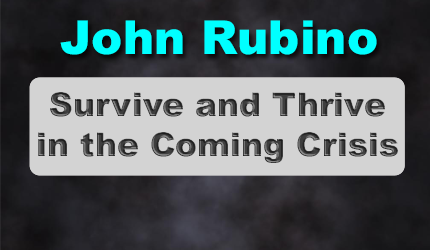March 5, 2022 | Doug Noland: The Fed Doesn’t Really Have The Tools To Address This

From this week’s Credit Bubble Bulletin:
In week nine of the Russia/Ukraine war, panic buying overwhelmed global commodities markets. The Bloomberg Commodities Index surged 13.0% to the high since 2014 – the “most stunning weekly surge in records that go back to when Nikita Khrushchev was in the Kremlin.” WTI Crude jumped $24.09, or 26.3%, to $115.58 (up 54% y-t-d). Palladium jumped 27.1%, Nickel 18.7%, Iron Ore (DCE) 15.5%, Aluminum 14.6%, Zinc 11.9%, Copper 10.1%, and Tin 6.9%. In the precious metals, Golds rose 4.3%, Silver 5.9%, and Platinum 6.5%. Too much “money” chasing limited supplies.
March 4 – Bloomberg (Megan Durisin and James Poole): “This week will go down in wheat trading history. Chicago futures for the grain have soared 40% — the most ever — as Russia’s war in Ukraine upends global grain supplies. That puts prices at a 14-year high, and milling wheat in Paris reached an unprecedented 400 euros ($438 per ton). The war is stalling shipments from one of the world’s most vital breadbaskets. Ukraine and Russia together account for a quarter of global trade of the staple, used in everything from bread to couscous and noodles.”
It was an ominous week for the global food supply and its price. Wheat (May contract) surged 40.6%, increasing y-t-d gains to 57%. Corn jumped 15% (up 27% y-t-d), and Soybeans rose 5.4% (up 26%).
Representative David Scott (A question to Chair Powell during Tuesday’s House Financial Services Committee hearing): “I want to sound the alarm here this morning, and I want you to listen to me and I want the nation to because I’m the chairman of our House Agriculture Committee – and I’m very worried about this turmoil over in Ukraine and Russia’s violent, illegal and criminal action that they are taking and the impact that this has on global trade and most importantly, our own food security. We could very well be on the verge of a hunger crisis all over this world… I want to ask you, Chairman Powell, the disruptions and rising prices from these commodities will destabilize global food markets and threaten our food stability and social stability. So, my question to you, Mr. Chairman Powell, to what extent could these developments create a financial stability risk here at home and abroad, and what must we do? We can go without a lot of things in this world, but the one thing we cannot go without is food. And when you have this much power on our food security for the world in the hands of these two countries warring at each other at this time, what can you do about it?”
Chair Powell: “Sir, your point is very well taken and I think… it’s shipping, it’s corn, it’s wheat, as you pointed out, it’s fertilizer, and we see that getting into food prices and into the food supply just — just in these early days after the sanctions have been put in place and the war less than two weeks old now. I really — the Fed doesn’t really have the tools to address this.”
During the hearings, Powell was queried on energy prices and a potential energy crisis, along with global supply chain issues. He was grilled on inflation. At least Powell asserted that the Fed had some control over inflation. “Hindsight says we should have moved earlier… We’re going to use our tools, and we’re going to get this done.”
Going back three decades to the Greenspan Fed, the almighty Federal Reserve seemingly had a solution for just about any problem. Wars, financial crises, economic downturns, terrorist attacks, and a pandemic. Fed acted as boundless Superman to the rescue with ever lower rates and more powerful monetary inflation. And the bigger the crisis, the more aggressive the inflationary measures. At least for financial markets, crises were no longer something to fear. Indeed, they were money-making opportunities. And this perception became ever more deeply embedded in financial asset and derivative prices – and Market Structure – across the world.
Here at Day Nine, Everything Has Changed. The Fed and global central bank community have no solutions for the worst European military crisis since WWII. No solutions for spiking energy, food and materials prices. No solution for unfolding shortages of so many vital commodities. No solution for panic buying. No solution if China decides to use its horde of dollars to procure additional supplies of commodities – at any price. No solution for a worsening global supply chain crisis. No solution for Russian bank insolvencies, collapsing securities values and illiquidity. None for the paralyzed Central Bank of the Russian Federation. No solution for a new “iron curtain.” No solution for the risk of a nuclear crisis (damaged energy facilities or warheads). No solution for the risk of war expanding to include the U.S. and NATO. There is today little central bankers can say or do to mitigate the myriad risks that have overwhelmed the markets and world.
STAY INFORMED! Receive our Weekly Recap of thought provoking articles, podcasts, and radio delivered to your inbox for FREE! Sign up here for the HoweStreet.com Weekly Recap.
John Rubino March 5th, 2022
Posted In: John Rubino Substack











